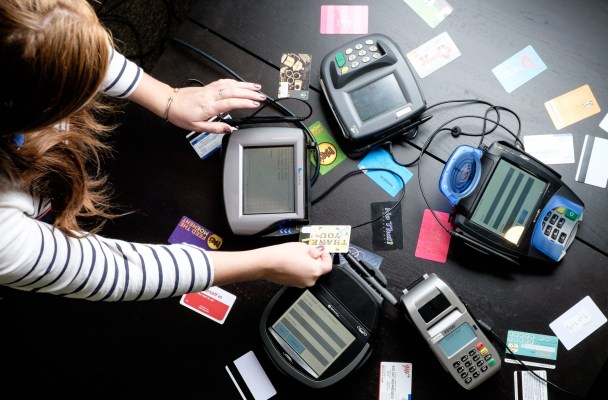The Stratos Card is about to jump in the deadpool. The company behind the universal credit card is shutting down, TechCrunch has confirmed from several sources. Founded in 2012 by Thiago Olson and Chris Bartenstein, the Ann Arbor, Michigan-based startup raised $6.63 million over three rounds of financing with the most recent being a $5.8M Venture round in October of 2014. We hear they ran out of money.
Update: The founders are sending over a statement this morning. They want customers to know that they fully intend on fulfilling all orders and restoring customer support. They are currently exploring several avenues to do so.
The Stratos Card is one of the handful of devices that attempt to consolidate a person’s various credit cards and loyalty cards into a single card. The device showed promise and worked most of the time, but I found it wasn’t perfect enough to find a permanent home in my wallet.
Users started noticing a few weeks back that the company was not responding to social media and support requests. MLive notes that the Ann Arbor building that used to house Stratos will be up for sale at the start of 2016.
Stratos launched its first product in May of this year, which garnered decent reviews. Most found the device mostly worked as promised, but found the card confused most waiters and store clerks. You see, to activate a credit card on the Stratos, a person must physically tap the Stratos Card twice on a hard surface. This causes a series of lights to flash and a person then can press one of the four hidden buttons on the device to select the desired payment method. Doing this in front of a store clerk often resulted in strange looks and unwarranted questions. I just wanted to pay for my milk and be on my way.
The Stratos, with a matte color scheme and lack of hologram logo, looks more like a business card than a credit card. I had waiters return the card to me more than a few times saying that they could not accept it. Most often, the card worked after I assured them it would work as a VISA.
Yet the Stratos Card mostly worked as advertised. It was the social awkwardness that caused me to stop using it. Prior to the product launch, I was given a tour of the company’s modest offices where it was clear that serious research and development went into developing and producing the product.
Several other companies are making similar devices to the Stratos Card including Coin and Plastc. Coin just started shipping its second generation device, which now uses NFC and is EMV-compatible so that users can not only tap to pay, the way you would with Apple Pay on an iPhone, but can integrate their chip-and-pin cards to the device. Plastc recently delayed the launch of its universal credit card to April 2016.
It’s unclear at this point the ultimate cause of Stratos’ demise.
